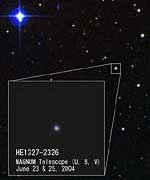The Spitzer Space Telescope (SST) is the fourth and final instrument in NASA’s Great Observatories series. The SST followed the Hubble Space Telescope (HST), Chandra X-Ray, and Compton Gamma Ray Observatories into space on August 25th, 2003. Placed in Earth-trailing heliocentric (solar) orbit, and working under a 2.5 plus year charter within NASA’s Origins Program, the SST revealed first public light in May of 2004 – giving the world a spectacular infrared view of the face-on grand spiral galaxy M51 in Canes Venatici.
Lord Rosse first described M51 as a “spiral nebula” in 1845. It wasn’t until Edwin Hubble resolved faint variable stars within another “M” – M31 – that M51 and other “spiral nebulae” achieved a rank equal with our own Milky Way – Galaxy!
But to name a thing is not to explain it. One of the toughest things to explain about anything is “How did it get to be what it is?”
Well before the release of SST’s image of M51, astronomers had already been given a “heads-up” on a rare instance of a class of distant objects in the heavens – an expansive region of gas and dust glowing faintly yet unattended by stellar light – just the kind of study that could revolutionize the way astronomers understand galaxy formation. NASA’s Origins Program had made a major hit and now the problem was to advance the runner to home using other sources of data…
In a paper entitled “Discovery of a Large ~ 200kpc Gaseous Nebula at z=~2.7 with the Spitzer Space Telescope” (published March 29, 2005), astrophysicist Arjun Dey of the National Optical Astronomy Observatory (NOAO) and colleagues from other organizations (including the SST operations center at the Jet Propulsion Laboratory) pulled together data from across the lower half of the em spectrum – radio to visible light – to paint a picture of early galaxy cluster formation associated with this excited (and exciting) region of dust and gas located some 11.3 BLY’s away in time and space.
In the words of the team, “We report the discovery of a very large spatially extended nebula associated with a luminous mid-infrared source.” To you and me that means they discovered “a long ago, and far away womb of early galactic birth”.
The object (SST24 J1434110+331733) was originally mapped using the SST’s MIPS and IRAC detectors during a mid-infrared survey of spring?s constellation Bootes in late January 2004. After data reduction by JPL personnel, it became clear that SST24 could offer some extremely significant insights into that mysterious era of galactic unfolding when young galaxies are ensconced in the stuff of star formation. But to penetrate this stuff would require expanding the picture of the region using light from across the em spectrum.
In part the need to have other looks at SST24 was driven by the limited aperture of SST’s 0.84 meter mirror and those long wavelengths associated with infrared light. At best, the SST revealed the central third of the nebulosity. (Instruments aboard the SST are limited to 6 arc seconds detail resolution.) Three onboard detectors (the Infrared Array Camera -IRAC, Infrared Spectrograph – IRS, and Multiband Imaging Photometer for Spitzer – MIPS) image and analyze infrared light in the mid to far-infrared wavelengths (3.6-160 micrometers).
Although light observed using the three SST instruments mostly originates from “warm” objects (gases and dust), light from near-optical sources can also be seen after expansionary redshift over vast distances. Interestingly, one particular bright line in that same “near-optical light” was first flagged for astronomical use by astrophysicist Lyman Spitzer – namesake of the SST itself – one of the leading 20th century proponents of infrared astronomy.
Joined with data from other instruments, Dey and his team put together a compelling case for an active galactic nuclei (AGN) within SST24. If verified such an AGN would demonstrate that black holes play an important role in early galaxy evolution. Such an example may very well revolutionize our understanding of galaxy formation by making AGN’s more the cause – rather than the effect – of galaxy group formation…
Visual data used by the team associated with SST24 was collected using the 4m and 2.1m telescopes of the NOAO in Kitt Peak, Arizona. These instruments improved SST resolution by a factor of almost eight times. Other data available in optical light extended the picture of SST24’s energy output. During May and June of 2004, spectrographic information on SST24 (along with foreground and background objects) was gathered in finely-tuned and precisely oriented 1 arc second strips through the 10 meter Keck I instrument on Mauna Kea, Hawaii.
From the paper’s abstract, “The bright mid-infrared source was first detected in observations made using the Spitzer Space Telescope. Existing broad-band imaging data from the NOAO Deep Wide-Field Survey revealed the mid-infrared source to be associated with a diffuse, spatially-extended, optical counterpart… Spectroscopy and further imaging … reveals the optical source is almost purely line-emitting nebula with little if any, detectable diffuse continuum emission.”
Typically, mature galaxies display a full spectrum of light generated by blackbody radiation from stellar photospheres. Such broadband spectra are usually reinforced by narrow, bright emission lines associated with atomic excitation. But SST24’s spectrum is dominated by a single narrow band of radiation. That band – though redshifted some 3.7 times due to 11.3 BLY’s of recession – associates with the “Lyman Alpha” frequency emitted by hydrogen gas. Usually such Lyman-alpha clouds irradiate by stimulation from distant background quasars. But in the case of SST24, another mechanism may be involved – a black hole source within the nebula itself.
In piecing together SST24’s structure, the science team determined that its AGN is offset from the center of the cloud by nearly one-tenth the cloud’s full extent. Although it is unclear what impact this offset has on galaxy formation, the fact of it must be incorporated into how we model galaxy group formation in the future.
Spectrographic shifts in Lyman alpha light also indicate that the central 100 KLY region of SST24 slowly revolves and contains the mass equivalent of some 6 trillion suns – some 5x that of our own Milky Way and Whirlpool (M51) galaxies combined. SST24 includes a region of space easily encompassing the entire Milky Way and all twelve satellite galaxies.
But SST24 is not totally devoid of star formation. The team reports that “a young star forming galaxy lies near the northern end of the nebula.” That galaxy is reddened by dust, has the same redshift as the Lyman-alpha radiation, plus broad-band radiation associated with star formation. This galaxy gives no indication of having an AGN. Because of this we may soon learn that AGN?s may not play a role essential to the formation of all galaxies.
Although radio-frequency examination of SST24 is difficult (due to resolution issues at long wavelengths), the team points out that its mid-infrared to radio-wave density ratio, “shows remarkable similarity to starburst galaxies…” For this reason parts of SST24 mat be passing through an era of rapid stellar evolution that could quickly lead to the revelation of a full-blown galaxy rich with luminous breeder stars…
SST24 is not the only Lyman-alpha cloud ever detected, but those few discovered are thought extraordinary by the science team: “The rarity of these >100kpc lyman-alpha clouds, their association with powerful AGN and galaxy overdensities, and their energetics all suggest that these regions are the formation sites of the most massive galaxies. If so, understanding the physical conditions and energetics of these systems can provide important insights into the massive galaxy formation process.”
Written by Jeff Barbour


